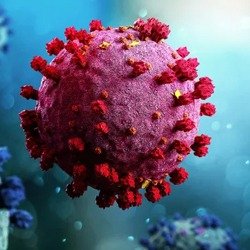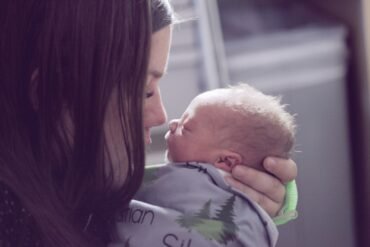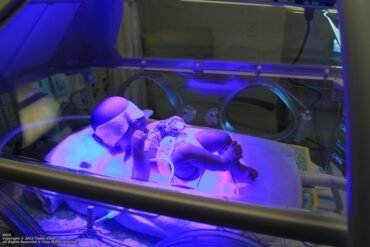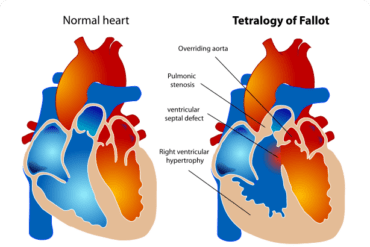Common Symptoms of Neonatal Respiratory Distress Syndrome

Table of Contents
- Rapid breathing and grunting
- Retractions and nasal flaring
- Cyanosis or bluish skin
- Poor feeding and low energy levels
- Increased heart rate or tachycardia
Rapid Breathing and Grunting
Rapid breathing and grunting are common symptoms of neonatal respiratory distress syndrome (RDS). This condition primarily affects premature infants or babies born with underdeveloped lungs. RDS can make it difficult for the baby to breathe properly and may require immediate medical attention.
Rapid breathing, also known as tachypnea, is characterized by an unusually high breathing rate in newborns. This symptom can be alarming for parents, but it is one of the body’s ways to compensate for inadequate lung function. Infants with RDS may take more than 60 breaths per minute compared to the normal range of 30-60 breaths per minute. The baby’s chest may visibly heave with each breath, indicating increased effort to draw in enough oxygen.
Grunting is another symptom commonly observed in infants with RDS. It is an audible sound made by the baby during exhalation and is caused by the baby’s attempt to keep their lungs open. The grunting sound occurs when the baby partially closes their vocal cords as air is forced out of the lungs, creating a “grunting” noise. The purpose of this grunting is to increase pressure in the lungs and prevent alveoli from collapsing, thereby improving oxygen exchange.
Both rapid breathing and grunting are signs of respiratory distress and should not be ignored. If your newborn exhibits these symptoms, it is crucial to seek immediate medical attention. Respiratory distress can lead to hypoxia (low oxygen levels) and complications affecting other organs if left untreated.
Additional symptoms of RDS may include:
- Flaring nostrils
- Cyanosis (bluish discoloration of the skin, especially around the mouth and fingertips)
- Retractions (visible sinking of the area between the ribs or at the base of the neck during breathing)
- Fatigue or lethargy
While RDS can be a serious condition, advances in neonatal care have significantly improved the outlook for affected babies. Treatment options may include oxygen therapy, continuous positive airway pressure (CPAP), administration of surfactant (a substance that helps the lungs stay inflated), and supportive care in a neonatal intensive care unit (NICU). Timely intervention and monitoring by medical professionals are essential to ensure the best possible outcome for infants with neonatal respiratory distress syndrome.
Retractions and Nasal Flaring
Neonatal Respiratory Distress Syndrome (NRDS) is a common condition seen in newborn babies, especially premature infants. It is characterized by breathing difficulties due to underdeveloped lungs. One of the major indications of NRDS is the presence of retractions and nasal flaring in the baby. Understanding these symptoms can assist in early detection and prompt treatment of this potentially serious condition.
Retractions refer to the visible sinking in of the areas in and around the ribcage, sternum, and neck during breathing. Infants with NRDS often struggle to draw in enough air for their oxygen requirements, causing these areas to collapse inward with each breath. Retractions are especially prominent in the lower part of the chest and above the breastbone. It is crucial to closely monitor for retractions as they indicate increased respiratory effort and a potential need for medical intervention.
Another noticeable symptom of NRDS is nasal flaring, which involves the widening of the nostrils during breathing. When the tiny airways in the lungs are narrow or blocked, the baby tries to compensate by flaring their nostrils to take in more air. Nasal flaring is a common sign of respiratory distress in newborns and can be observed in conjunction with retractions. If you notice your baby’s nostrils flaring while breathing, it is advisable to seek medical attention promptly.
It is important to remember that each baby is unique, and the severity of retractions and nasal flaring can vary. However, these symptoms should never be ignored, especially if they worsen or are accompanied by other signs of respiratory distress such as rapid breathing, grunting, or bluish discoloration of the lips and skin.
If your baby is diagnosed with NRDS, the healthcare team will initiate appropriate interventions. These may include providing supplemental oxygen, assisted ventilation, and administering medications aimed at improving lung function. Prompt medical attention and intervention can significantly improve outcomes for newborns with NRDS.
In summary, retractions and nasal flaring are common symptoms of Neonatal Respiratory Distress Syndrome (NRDS). Retractions manifest as visible sinking in of areas around the ribcage, sternum, and neck, while nasal flaring involves the widening of nostrils during breathing. These symptoms indicate increased respiratory effort and should not be ignored. If you notice these signs in your baby, seek medical attention promptly for a proper diagnosis and appropriate treatment.
Cyanosis or Bluish Skin
One common symptom associated with Neonatal Respiratory Distress Syndrome (NRDS) is cyanosis, which manifests as bluish skin coloration. Cyanosis occurs when there is insufficient oxygen supply to the body’s tissues, resulting in a bluish discoloration of the skin, particularly in the lips, tongue, and extremities. This visible sign indicates a lack of oxygenation, suggesting a compromised respiratory system in infants.
Cyanosis can be caused by various factors related to NRDS, including inadequate surfactant production, immature lung development, or difficulties in establishing effective gas exchange within the lungs. These issues prevent proper oxygenation of the blood and can lead to cyanosis. Identification of cyanosis is crucial as it can indicate the severity of respiratory distress and the need for immediate medical intervention.
When a baby shows signs of cyanosis, healthcare providers should promptly evaluate their respiratory function to determine the appropriate course of action. Treatment approaches for cyanosis due to NRDS might include:
- Administering supplemental oxygen to increase oxygen levels in the blood.
- Using non-invasive ventilation methods, such as Continuous Positive Airway Pressure (CPAP), to help keep the airways open and improve oxygenation.
- In severe cases, when other methods are insufficient, intubation and mechanical ventilation may be necessary to provide adequate oxygen and respiratory support.
It is important to note that the presence of cyanosis alone does not confirm NRDS, as there can be other underlying conditions causing this symptom. Therefore, a comprehensive evaluation by a healthcare professional is essential for an accurate diagnosis and appropriate treatment.
To summarize, cyanosis, characterized by bluish skin discoloration, is a common symptom observed in Neonatal Respiratory Distress Syndrome. It signifies inadequate oxygenation and highlights the need for immediate medical attention. Early recognition and appropriate intervention can significantly improve outcomes for infants affected by NRDS.
Poor Feeding and Low Energy Levels
Neonatal Respiratory Distress Syndrome (NRDS) is a condition that affects newborns, primarily those born prematurely. It occurs when the baby’s lungs have not fully developed, making it difficult for them to breathe properly. While difficulty in breathing is the primary symptom of NRDS, there are other signs to look out for too. One such indication is poor feeding and low energy levels in the baby.
Babies with NRDS often struggle to feed properly due to their labored breathing. They may seem disinterested in nursing or bottle-feeding and may tire easily during feeding sessions. Here are some key points to keep in mind regarding poor feeding and low energy levels in infants with NRDS:
- Weak sucking reflex: Premature infants with NRDS may have a weak sucking reflex, making it challenging for them to latch onto the breast or bottle.
- Rapid fatigue: Due to an increased effort to breathe, these babies exert more energy than healthy newborns, causing them to tire quickly during feeding.
- Poor weight gain: Insufficient caloric intake resulting from poor feeding can lead to slow or inadequate weight gain, which may raise concerns about the baby’s growth and development.
- Irritability or fussiness: Babies experiencing difficulty breathing due to NRDS may become irritable or fussy during feeds, as the extra effort required to breathe leaves them tired and uncomfortable.
- Inability to complete a full feed: Infants with NRDS often have to pause during feeds to catch their breath, resulting in incomplete feeding sessions.
It is essential to address poor feeding and low energy levels promptly to ensure that the baby receives proper nutrition and maintains stable energy levels. Consulting with healthcare professionals experienced in neonatal care is crucial for managing the condition effectively.
In conclusion, poor feeding and low energy levels are common symptoms seen in newborns with Neonatal Respiratory Distress Syndrome. Recognizing these signs early on can help parents and caregivers seek appropriate medical attention and support for their baby, ensuring their overall well-being and development.
Increased Heart Rate or Tachycardia
Neonatal Respiratory Distress Syndrome (NRDS) is a condition that affects newborns, specifically their lungs, making it difficult for them to breathe properly. It is a common respiratory disorder among premature babies and can be a cause of concern for parents and healthcare professionals. One of the common symptoms associated with NRDS is increased heart rate or tachycardia. Here’s what you need to know about this symptom:
- Rapid heartbeat: Babies with NRDS may experience a rapid heartbeat or tachycardia, where their heart rate exceeds the normal range for their age. This is usually a sign that their body is struggling to get enough oxygen, and the heart tries to compensate by pumping faster.
- Observation by healthcare professionals: Healthcare professionals closely monitor the heart rate of newborns with NRDS to assess their respiratory distress severity. The rapid heartbeat acts as an indicator of the baby’s overall well-being and oxygenation status.
- Monitoring oxygen levels: A high heart rate in conjunction with other symptoms, such as bluish discoloration of the skin (cyanosis), may necessitate increasing the oxygen supply to the baby. Regular monitoring ensures that the appropriate interventions are carried out promptly.
- Possible complications: Sustained tachycardia can put additional stress on the baby’s heart and lead to complications such as arrhythmias or heart failure. Therefore, it is vital to manage NRDS effectively and provide proper medical care to prevent further complications.
- Treatment options: Managing NRDS typically involves providing respiratory support to the baby, which may include oxygen therapy, continuous positive airway pressure (CPAP), or mechanical ventilation. Treating the underlying cause of respiratory distress is crucial to alleviate the symptoms.
It is important for parents to consult with healthcare professionals if they notice increased heart rate or any other concerning symptoms in their newborn. Early intervention and proper medical care can significantly improve the outcomes for babies affected by NRDS. Remember, each baby is unique, and the treatment plan will be tailored to their specific needs.


























